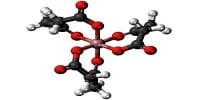Lanthanides and Actinides both show close resemblance because these involve filling of f-subshells. Both have colored ions, low electronegativity, high re-activity and show magnetic properties. However, these also differ from each other as shown in the following explanation.
Lanthanides
- Binding energies of 4f electrons are higher.
- Maximum oxidation satate exhibited by lanthanides is +4 e.g. Ce4+
- 4f electrons have greater shielding effect.
- Most of their ions are colourless.
- They are paramagnetic but magnetic properties can be easily explained.
- They do not form complexes easily.
- Except promethium, they are non-radioactive.
- Their compounds are less basic.
- They do not form oxocations.
Actinides
- Binding energies of 5f electrons are lower.
- Due to lower binding energies they show higher oxidation states such as +4, +5 and +6. Uranium exhibits +6 oxidation state in UF6 and UO2Cl2
- 5f electrons have poor shielding effect.
- Most of their ions are coloured U3+ (red), U4+ (green) and UO22+ (yellow)
- They are also paramagnetic but their magnetic properties are very difficult to interpret.
- They have much greater tendency to form complexes.
- All of them are radioactive.
- Their compounds are more basic.
- They form oxocations such as UO22+, UO+, NpO2+, PuO2+.












